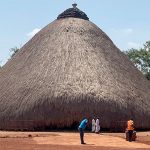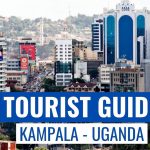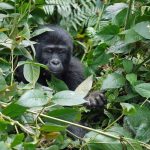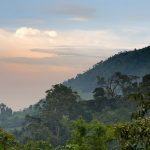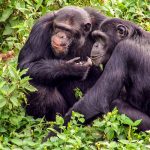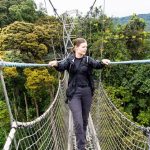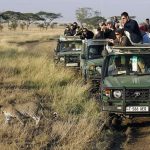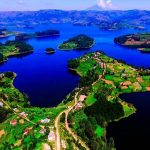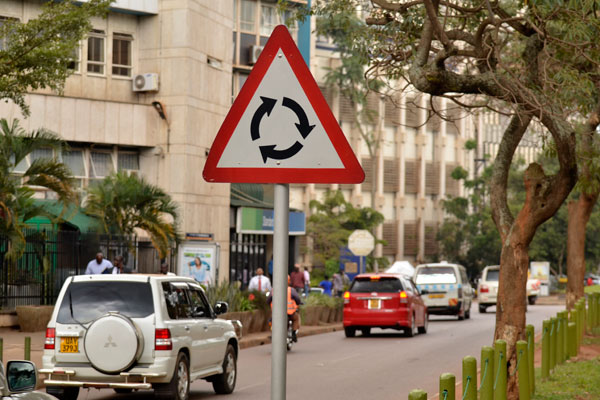Lake Mburo National Park is a compact gem, located conveniently close to the highway that connects Kampala to the parks of western Uganda. It is the smallest of Uganda’s savannah national parks and underlain by ancient Precambrian metamorphic rocks which date back more than 500 million years. It is home to 350 bird species as well as zebra, impala, eland, buffalo, oribi, Defassa waterbuck, leopard, hippo, hyena, topi and reedbuck.
Together with 13 other lakes in the area, Lake Mburo forms part of a 50km-long wetland system linked by a swamp. Five of these lakes lie within the park’s borders. Once covered by open savanna, Lake Mburo National Park now contains much woodland as there are no elephants to tame the vegetation. In the western part of the park, the savanna is interspersed with rocky ridges and forested gorges while patches of papyrus swamp and narrow bands of lush riparian woodland line many lakes.
Getting There
Lake Mburo National Park is located in western Uganda along Kampala- Mbarara high way some 253 km from Kampala capital city. Only 3 hours drive from Kampala, Lake Mburo is easier to get there. For such easier accessibility and along the highway, Lake Mburo should be high on every tourist’s list as their safari park of choice when visiting Uganda.
Park at a Glance
Size: 370km2
Altitude: 1,220m – 1,828m above sea level
Wetland habitats comprise 20% of the park’s surface
The parks’ precarious past has seen wildlife virtually eliminated several times: firstly in various attempts to rid the region of tsetse flies, then to make way for ranches, and finally as a result of subsistence poaching.
20% of the park’s entrance fee is used to fund local community projects such as building clinics and schools.
Things to See
Lake Mburo offers a rich variety of cultural experiences in the surrounding communities. Visitors can do a village visit; learn about the Ankole long horn cattle, visit schools and markets. Enjoy luxury in the wilderness by staying at one of the lodges in the park.
Known as the whispers of the wild because of its sprawling mixed bush savannah, tropical forests and wetland habitats, the 370 sq km Lake Mburo national park is Uganda’s smallest savannah national park. It contains a variety of different species of mammals and 350 species of birds. Lake Mburo is the only park in the country to see impalas. In fact Impalas are the most abundant antelope in the park along with eland, topi, Oribi, deffessa waterbuck, bush bucks, and duikers.
One of Uganda’s largest plains populations makes its home here. Buffalo and warthogs are most commonly sighted. Salty rocks attract animals as they come to lick salt.
Rothschild’s giraffe were introduced in 2017 and are now present. Harder to see but still in residing in the park are the leopards and hyenas.
The Nakivale wetland system encompasses 13 lakes within the borders of the park and animals living in the wetlands and lakes include hippos, Nile crocodiles and birds such as shoebill stork, papyrus gonelock, giant kingfisher, African fin foot, yellow warblers, and brown chested wattled plover among others. The park also includes Rubanga tropical forests where you can spot hippos before they return to the waters.
Things to Do
You can explore the park by different activities some of which you will get closer to wildlife than you expect. We recommend staying in the park at least 2 nights for a rewarding overall wildlife experience.
Day and night game drive safaris
Game drives in Lake Mburo are conducted early morning and afternoon. Visitors can use UWA specialized game vehicles or their own safari vehicles. As a matter of fact, you get to explore a vast distance and different habitats such as mixed bush savanna, acacia woodlands, thickets, flooded valleys along the Lake Mburo wetlands, and visitors on game drive get to view impala, zebra, giraffe, buffalo, eland, topi, warthog, deffessa waterbucks, bushbucks, oribi.
With night game drives, rangers use spotlight for a chance to spot nocturnal animals like a leopard, hyena, mongoose, porcupine, and aardvark. Although nocturnal animals can never be predicted in the bush, many visitors staying for 2 or 3 nights get to spot the leopard many times.
Launch trips on Lake Mburo
Lake Mburo which is the largest of the 13 lakes in the park provides ideal environment for boat cruises allowing visitors to watch hippos, Nile crocodiles, swamp dwelling antelope called sitatunga and water loving birds such as shoebill stork, African fish eagle, African fin foot, papyrus gonelock, giant king fisher. Launch trips are done in the afternoon at 2pm and the sundown at 5pm.
Bird watching
With 250 species of birds, birding gets better in Lake Mburo where savannah, forest, water and swamp dwelling species of birds have. The notable species to look out for include shoebill stork, papyrus gonelock, and African fin foot among others. Rubanga forest in the south of the park there are forest walks for birding and you may spot hippos grazing.
Guided game walks/ walking safaris
Another unique experience is a game walk for those who prefer to walking, Uganda wildlife authority rangers will lead you through Lake Mburo wilderness on foot. The walks lead you the salty rocks where animals are found licking salt. You also learn how to look for animal tracks, as well as learn the wildlife of the park. These walks are also a great fun for family and children.
Horseback riding safaris
On a horseback, you get the best wildlife viewing in Lake Mburo national park. You may wonder whether it is safe to ride a horse among herds of buffaloes. Yes it is absolutely safe with horses in Lake Mburo, they have been raised and grazing with the wild animals and are kinda used to each other. Horse rides in Mburo are such a unique activity to get close to wildlife such as buffalo, topi, eland, zebra, and giraffe.
Bicycling
Visitors who love to get physical; mountain bicycling in Lake Mburo has got you covered. It is even exciting to ride along side wild animals. Rides range from 5 km to 50 km taking you across hills, valleys and gentle plains of Lake Mburo. The terrain the park is not challenging as it would be if you were bicycling in mountainous Elgon national park.
Local tour of Ankole long cattle Communities
Usually done in the evening, with local community tour you go to see long horn cattle and meet the local people and learn more of the school community projects.
Family safaris
Lake Mburo is one of the family friendly parks with activities available for kids such as guided bush walks, outdoor castles and dinning.

